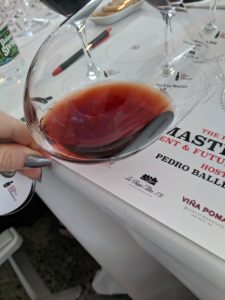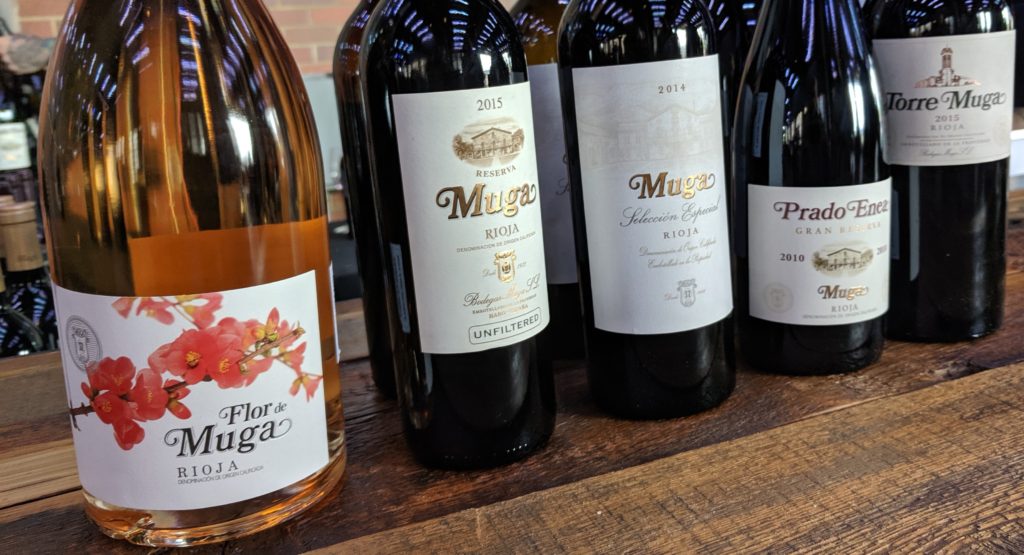We all know the three most important rules of real estate: Location, Location, Location! And, while it’s true of real estate, it is also true in the wine world – the best wines are made in the best locations. Of course, what makes a great real estate location isn’t always the same as what makes a great vineyard location, but they also share a key trait: access to transportation. Case in point, the brandies of Cognac are far more well-known than those of Armagnac, thanks to the relative ease of getting Cognac to market via waterways as opposed to the arduous, overland journey required for Armagnac. So, you can imagine the profound influence that the Haro Railway Station had on the wines of Rioja.
Haro itself dates back to the 10th century and has long been associated with viticulture. Considered to be the heart of the Rioja region, Tempranillo-based wines have been produced here for centuries. But, it was the twin impact of the regional railway and the influence of the Bordelais, who had traveled to Spain in the wake of the phylloxera crisis, made it possible for Rioja to receive recognition on the world stage.
Prior to train travel, the wines would be transported more than 100 km via mules and carts. But, once the Haro Station was built, Haro was one of the first cities in Spain to have a modern railway connecting it, not only elsewhere in Spain, but with France. Several wineries set up near the station to make it easier to get their wines into the market, creating the Haro Station District. Additionally, as French investors and Bordeaux producers came to the region, they realized that the Rioja wines needed time to age to become great, thereby further shaping the way these wines were made.
A recent Masterclass, Rioja Railway Wine Experience, led by Pedro Ballesteros, MW, traced this defining history and underscored the importance of innovation, technology and tradition in the production of these wines. Now, five decades later, the wineries situated in the Haro district are still focused on tradition, innovation and technology as they seek to maintain their reputations and overcome the challenges that lie ahead.

Specifically, they are seeking to improve quality and combat issues associated with climate change, particularly in identifying grapes that ripen later to maintain the requisite acidity. In response to these issues, they are investing time, talent and money into research and development and have also spent considerable resources on high tech tools such as optical sorters.
Participants at the Masterclass had the opportunity to taste some older wines from the assembled wineries, providing a benchmark of what classic, older Rioja wines taste like. They also were given the chance to taste wines that reflect the innovations currently being made.
Bodegas Bilbainas
With more than a century of history behind it, Bodegas Bilbainas was founded in 1901 by Santiago de Ugarte. It boasts large underground cellars and 250 hectares of vineyards. Its Vina Pomal brand first appeared in 1904.
Vina Pomal Gran Reserva 1978
They produce their wines in a Burgundian style and it was an absolute treat to taste this classic, aged Rioja. Pale garnet in color, the nose offered up dried rose and dried plum, while the dry palate displayed medium acidity, tart, dried strawberry, a hint of dried floral, dried herbs and long length.
Bodgeas Bilbainas Vina Pomal Vinos Singulares Graciano 2015
Their innovative entry reflects their emphasis on Graciano and its ability to provide bright acidity to its Riojas as the climate continues to heat up. The 2015 vintage was a great one. Notes of spice, white pepper, smoke, vanilla, hint of herbs/dried herbs, black cherry, very fresh, good acidity, firm tannins and long length.
La Rioja Alta SA
Founded in 1890 by five families, their descendants are all still involved in the winery to this day. La Rioja Alta’s 460 hectares of vineyards are situated within La Rioja with an emphasis on the Tempranillo grape. The winery maintains its own cooperage, using American oak. They have also made significant investment in research and development, including the purchase of an optical grape sorter.
La Rioja Alta Gran Reserva 890 1981
A blend of 95% Tempranillo, 5% Graciano and Mazuelo, this wine was medium garnet in color with more concentration and a more intense nose than the 1978. Aromas of dried cherry, faint floral greeted the nose. The palate was dry with a slightly sweet fruit note of dried plum, slight tannic grip and long length. This was my favorite of the aged wines of the flight.
La Rioja Alta Garnacha de la Finca La Pedriza 2017
While not a commercial release, this wine offered a look at La Rioja Alta’s quality commitment to viticulture and its focus on Garnarcha as a way to maintain good acidity levels in its wines. The nose showed lots of bright, red cherry fruit, with some floral notes, both of which persistent on the dry, light+-bodied palate. It had zippy, bright acidity and culminated in long length.
Bodegas Roda
The new kid on the block, Roda was established in 1987 by Mario Rotllant and his wife, Carmen Daurella, whose vision was to create a modern-style wine that would serve as a hallmark for the region. Taking the first two letters of each of their last names Ro (Rotllant) and da (Daurella), Roda was born. Today, the winery works with a total of 120 hectares, 70 of which are estate owned and an additional 50 that are managed by contract growers. All of the vines are bush trained and dry farmed, with minimal intervention.
Bodegas Roda Roda I 2004
From the excellent 2004 vintage, this wine displayed notes of smoke, black fruit, vanilla, ripe fruit, with a dry palate with firm tannins, flavors of strawberry, black cherry and other dark red fruit.
Bodegas Roda Roda 107 2010
As part of their innovative efforts, Roda has identified 552 individual clones of Tempranillo, choosing 20 of them for propagation in search of the best Tempranillo. They have planted these various biotypes in pursuit of determining which ones will be the best for the future. This wine was a beautiful expression of a Tempranillo-focused Rioja, showing lots of rich, ripe strawberry and black cherry, with slight oak and vanilla, culminating in long length.
Muga
Founded in 1932 by Isaac Muga and Aurora Cano, the wines of Muga were initially made in an underground cellar until they set up their own winery in 1968. It is currently a family-run winery. Muga also has an on-site cooperage and is the only winery in Spain making all its vats and barrels. They practice traditional winemaking, including fining with egg whites.
Bodegas Muga Prado Enea Gran Reserva 1994
Offering up a faint nose of red fruit and floral notes, the dry palate displayed flavors of strawberry, plum, slight dried fruit, a slightly grainy texture due to the tannins, finishing with long length.
Bodegas Muga Prado Enea Gran Reserva 2010
Hailing from one of the best Rioja vintages, this wine is the result of Muga’s quality control using an optical sorter in selecting which fruit does (or doesn’t) go into the finished wine. An intense nose of herbs, floral and black cherry fruit, the palate offered up firm tannins, lovely dark fruit, oak and slight vanilla with long length. It is a beautiful wine with lots of potential; they suggested holding it until 2035.

Gomez Cruzado
Founded in 1886, Gomez Cruzado is presently a boutique winery with 250,000 bottles produced annually and is the smallest of the Haro Station District wineries. It is run by David Gonzales and Juan Antonio Leza. Its vineyards are comprised of old bush trained vines and the wines undergo long aging periods before release.
Bodegas Gomez Cruzado Honorable 2014
Showing herbal aromas coupled with dark fruit, this wine was fresh, with nice lingering cherries, herbs and cocoa, and long length.
Bodegas Gomez Cruzado Montes Obarenes 2015
A white Rioja, this wine is a blend of Viura and white Tempranillo grapes. The majority of the wine (80%) was fermented and aged on its fine lees in new French oak barrel, with the remainder in concrete tank. It was full-bodied, with good acidity, citrus, oak and vanilla, along with long length.
NB: For those interested, a more detailed account of this history is available online.
